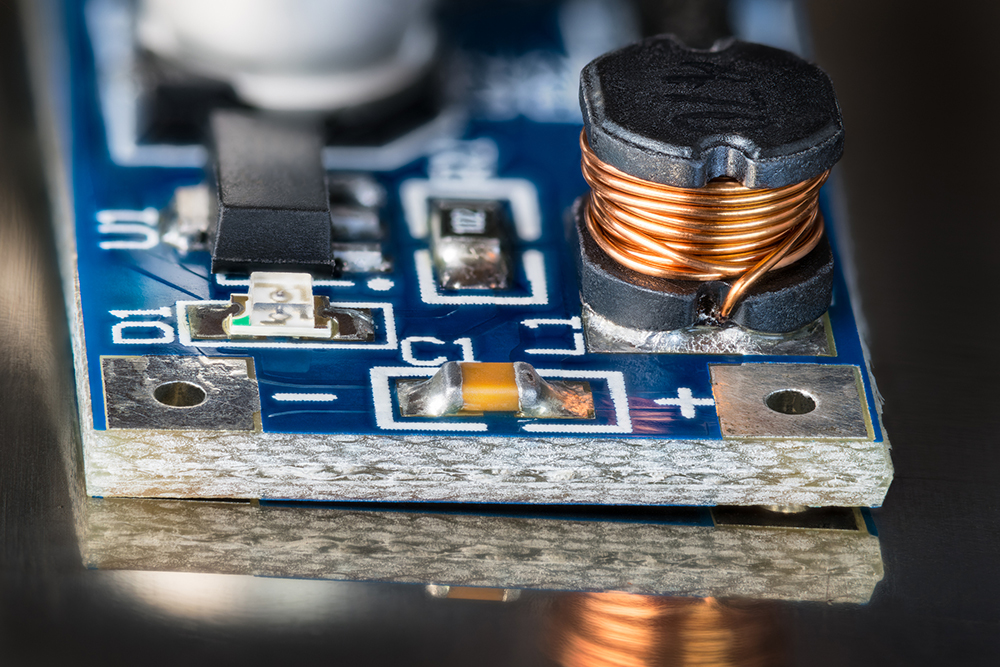Inductors

More from the Category
Inductors may be small, but their impact on electronic circuits is enormous. These passive components can store energy in a magnetic field, which is invaluable in the world of electronics. They play a critical role in filtering, amplifying, and generating signals—ensuring a circuit remains stable and functional.
Power electronics, telecommunications, and information technology rely heavily on inductors for reliable and efficient performance. Many electronic devices we use daily wouldn't function without these versatile components. So, the next time you power up your favorite gadget, take a moment to appreciate the humble inductor that made it all possible.
Construction of Inductors

Construction of Inductors
Inductors are typically composed of a coil of wire wound around a core material. This core can be made of air, iron, ferrite, or other magnetic materials, and the wire is usually copper or aluminum. The number of turns in the coil—ranging from a few to thousands—affects the inductance value.
Additional factors influencing inductance include:
• Core Material: Air-core inductors are preferred in high-frequency applications for their low losses and high Q-factor. Iron-core inductors, however, are better for applications needing high inductance.
• Coil Dimensions: The diameter, length, and shape of the coil influence performance, tailored to the requirements of specific circuits.
Operation and Working Principle
Electromagnetic Induction
Inductors operate on the principle of electromagnetic induction. When current flows through the coiled conductor, it generates a magnetic field and stores energy as magnetic flux. If the current changes or stops, the collapsing magnetic field induces a voltage in the coil.
This ability to resist current change earns inductors the nickname "inductive loads." This resistance is vital in circuits where current stability is crucial—whether in home electronics or industrial machinery.
Right-Hand Rule and Faraday’s Law
• Right-Hand Rule: When current flows through a conductor, a magnetic field forms around it. Coiling the conductor strengthens this field proportionally to the number of turns.
• Self-Induction: As per Faraday’s Law, a changing magnetic field induces a voltage that opposes the original change. This phenomenon—self-induction—is the core operating principle of inductors.
Key Characteristics of Inductors
Inductors possess several important characteristics, each influencing how they're used in circuit design:
Inductance (H)
This is the core property that defines how effectively an inductor stores energy. It depends on:
· Number of windings
· Coil size and shape
· Core material
Impedance (Z)
In AC circuits, impedance increases with frequency. This frequency-sensitive behavior makes inductors ideal for filtering unwanted signals.
Current Phase Shift
In an AC circuit, current lags voltage by 90° due to magnetic energy storage. This phase shift provides stability during voltage changes.
Saturation
Excessive magnetic field strength can saturate the core, drastically reducing inductance and affecting signal accuracy. Proper design helps mitigate this risk.
Applications of Inductors
Inductors are essential across a range of applications, each exploiting their ability to resist current change and store magnetic energy.
Power Supplies
Inductors filter out unwanted high-frequency noise and ripple in DC output, often working alongside capacitors to form LC filters. These ensure smooth, reliable power for sensitive devices.
Filters
Used in bandpass, low-pass, and high-pass filters, inductors selectively block or pass frequencies. They are crucial in:
- • Audio/video electronics
- • Power supplies
- • Communication systems
Oscillators
Inductors form part of LC resonant circuits that generate precise frequencies. Oscillators are used in:
- • Radios
- • Clocks
- • Communication systems
Amplifiers
In amplifiers, inductors match impedance and filter out undesired signals. Paired with resistors and capacitors, they fine-tune signal transfer and frequency response.
Inductor Calculations

Inductance Formula
L=N2⋅μ⋅AlL = \frac{N^2 \cdot \mu \cdot A}{l}L=lN2⋅μ⋅A
Where:
• LLL = inductance (henries)
• NNN = number of coil turns
• μ\muμ = core permeability (H/m)
• AAA = coil cross-sectional area (m²)
• lll = coil length (m)
Impedance Formula (AC Circuits)
ZL=jωLZ_L = j\omega LZL =jωL
Where:
• ZLZ_LZL = inductive impedance (ohms)
• jjj = imaginary unit
• ω\omegaω = angular frequency (rad/s)
• LLL = inductance (henries)
Note: Coil geometry, spacing, and core shape (e.g., toroidal vs. non-uniform) also influence inductance stability.
Why Inductors Matter – And How Microchip USA Can Help
Inductors are vital to modern electronics, enabling critical operations in signal processing, power regulation, and circuit protection. As electronic systems grow more sophisticated, the demand for efficient, reliable inductors—and the expertise to use them—has never been greater.
Your Trusted Partner in Electronic Components
Microchip USA is an experienced independent distributor of electronic components specializing in hard to find and obsolete parts.
Our team has extensive industry experience and works tirelessly to source components that others can't—ensuring your operations stay on track.
How We Support You
• Customized supply chain strategies tailored to your business goals
• Dedicated support for part sourcing and logistics
• Real-time insights into market trends and availability
Let Microchip USA be your go-to resource for managing the complexities of component procurement and inventory control.
Ready to Power Up Your Projects?
Whether you're designing a cutting-edge device or maintaining legacy systems, Microchip USA is here to help you succeed. From inductors to integrated circuits and everything in between, we’ve got you covered. Contact us today!